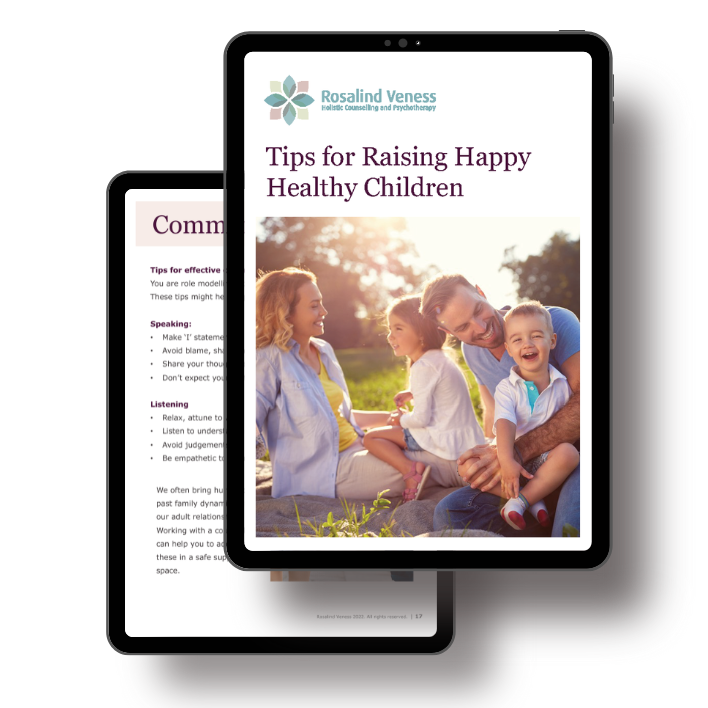
Picture this – your child is struggling at school, talkative and disruptive, and their teacher asks you to have them assessed for ADD/ADHD. How do you feel?
Are you relieved because a diagnosis offers some understanding about why they are so restless and often difficult to be with?
Or does this bring dread to your heart, fearing there might be something wrong with your child?
Defining ADD/ADHD
The terms ADD or ADHD are often used to describe a child who is restless in class, talkative, impulsive, hyper-reactive, and struggling to pay attention and learn. This child is easily distracted, has a short attention span, poor memory, heightened emotional reactions and talks constantly.
At a deeper level, adults with ADD/ADHD have described their experience as a sense of not being present in life. Some have spoken about a feeling that things happen around them, but they don’t feel like a participant – more of an observer.
The National Health and Medical Research Council (NHMRC) of Australia describes ADHD as “significant difficulties with attention and/or hyperactivity and impulsivity, which are inconsistent with a person’s chronological or developmental age”.
In other words, they are describing developmental immaturities, or gaps in early stages of sensorimotor development.
An Holistic Perspective
Physician, renowned speaker and best-selling author, Dr Gabor Mate in his best selling book Scattered, describes ADD as “A physiological consequence of life in a particular environment, in a particular culture”. He goes on to say it is reversible and developmental, rooted in multi-generational family stress and disturbed social environments.
Medication is often used to address the symptoms of restlessness and poor attention span, enabling a child to focus in class. While suppressing the symptoms, medication will never address the underlying immaturities in early development that are contributing to the behaviours that we see on the surface. Neither can it address side issues such as poor self esteem, loss of confidence, social connectedness, inherited family trauma and implications of life in the twenty-first century.
The behaviours associated with ADD/ADHD offer a message to all of us, forcing us to look more deeply, bringing often ignored, underlying issues to our attention.
The ADD/ADHD Child in the Classroom
In my experience, it seems quite common for schools to ask parents to have their children diagnosed and medicated for symptoms of ADHD. These children are expressing signs of restlessness, emotional outbursts, and other disruptive behaviours. They are all indications of developmental immaturities.
These behaviours are signs of a dysregulated nervous system. For example, a teacher’s stern voice in the classroom can immediately alert a sensitive or hyper-aware child’s nervous system, triggering a reaction that seems totally out of proportion. In other words, the behaviour is below conscious awareness, and happens in response to underlying trauma messages held in the body.
We Can’t Pay Attention When we are Frightened
When we are frightened, it is very difficult to “pay attention”. Our senses are on high alert, tuning into perceived threats in our environment, activating fight/flight arousal, or dropping into a dissociative space.
Unable to follow instructions and participate in class discussions, a child’s self esteem often suffers, unaware of why they are struggling. As a result they may avoid going to class, or even refuse to go to school.
Morning routines are disrupted with a child complaining of headache or tummy ache before school, delays getting ready and misses the bus. You finally get them to school, but tension builds up during the day, invariable exploding when your child reaches the safety of home?
Does this sound a familiar story?
We Need to Feel Safe in Order to Learn
We need to feel safe in order to be open to learning, taking in and processing new information. For some children the classroom does not feel safe. The noise level can seem overwhelming, putting their sensory perception on high alert. Then it doesn’t take much to tip them into a heightened reaction.
These are all signs of developmental immaturities.
My Story
My daughter wasn’t happy at school, releasing her tension in the car on the way home (loudly and angrily). At a loss to understand, I consulted with a naturopath for herbs to reduce her anxiety, then realised I was medicating her to fit an environment that was clearly stressful for her. I plucked up courage to ask for her to be changed to another class. She was still stressed, so we changed schools. Eventually I found the courage to home school.
We worked on her anxiety following a developmental movement program, known as The Extra Lesson. I did the training and we worked through the program together. I discovered that although I did well at school, I had learning difficulties too! Looking back, I can admit to spending a considerable amount of time gazing out the window in response to feeling overwhelmed in a classroom. Either that or I just closed down, feeling the anxiety and pressure to stay emotionally present in the room was too much.
My Experiences as an Adult
As a young adult at uni I spent more time gazing around the room, finding it difficult to focus on what the lecturer was saying. When my friends received better marks, I just thought I needed to work harder! Most of my learning came from spending hours in the library studying. Now I embrace the benefits of distance education and online learning!
In my 50’s I had a listening assessment. Everything became clear when the assessor asked me “Ros, how did you ever get through Uni?” I realised learning didn’t have to be that hard! Following this, my daughter and I completed a program of listening therapy, combined with the development movements. For both of us, our ability to listen and pay attention improved markedly.
An important part of our shared healing process was working on my own issues through counselling and other therapies! Now my daughter is a well adapted young adult, running her own business, and helping other young female entrepreneurs. I like to think my learning has improved, too, and I have continued to work on my own personal biography through ongoing counselling and psychotherapy.
Something to Ponder
Drawing on my own experience, in combination with the current research, I ask the following question….
If a child needs to be medicated in order to fit the system, what is the message this child is bringing us? Could the system actually be part of the problem?
Were children really designed to sit still in a classroom and listen to instructions, or were their bodies designed for movement and play?
ADD/ADHD – Addressing Developmental Immaturities
Many are happy to follow the path of medication, but not all parents see this as their preferred solution. This short term response, may provide peace in the immediate term, but will not address any of the associated developmental immaturities.
As a counsellor with close to 20 years experience of supporting children using a development approach to address challenging behaviours, I offer an alternative perspective. This holistic approach is based on addressing the developmental immaturities contributing to the diagnosis.
I see ADD/ADHD as a description of behaviours rather than a disorder. Developmental rather than a pathology. It is a response to the environment that the child has grown up in, and the stresses of life in the 21st century. We all have a part to play in creating change.
An Holistic Approach to Addressing Symptoms of ADD/ADHD
Healing is a gradual process of growth towards wholeness. There are no quick fixes here. The first step is to look beyond the perception of ADD/ADHD is an illness, which sees medication as the solution.
An holistic approach to healing sees ADD/ADHD as part of a bigger picture. This includes addressing immaturities in a child’s early development, combined with family therapy. Our children do not exist in isolation. We can ask ourselves the question ”what is contributing to the behaviour?”
Counselling offers safety in relationship while addressing early sensorimotor development through a series of graded floor exercises We are recapitulating early movements, building pathways in the brain for processing information. The aim is to minimise the symptoms of ADD/ADHD and improve the quality of life. We’re looking at lifelong growth and change, rather than just suppressing symptoms for tomorrow in the classroom.
It Didn’t Start with You
This is best supported by family therapy, working with parents to build closer relationships based on understanding, and feeling supported. These issues did not start with you or your child. We are seeing a combination of environment and family history, impacted by life in the 21st century. Behaviours offer us a barometer of today’s social world.
Therapy is about helping you to realise your potential. A development movement program is not just for children. It can also be helpful for adults aware of having learning difficulties, or receiving a diagnosis later in life. I was 50 when I realised I had learning difficulties, and a little older when I found a large part of my problem stemmed from difficulties with listening, or auditory processing. Like many of us, I easily became overwhelmed with too much sensory input.
Brain Development is Sequential and Hierarchical
Bruce Perry, leading child psychiatrist and neuroscientist, in conversations with Oprah Winfrey in their book “What Happened to You?”, noted that brain development is both sequential and hierarchical. This means that development happens in a certain sequence, building from the lower levels of the brain to more complex processing. Immaturities at any stage can create difficulties later on.
Asking a child to sit still and learn in the classroom when they don’t have the sensorimotor skill development to do this is a bit like trying to put the roof on a house before building the foundations. Sooner or later, things will become ”wobbly”, with learning and behavioural challenges as a result.
Benefits of a Neuro-Development Program
Since 2005 I have been offering a development movement program in my local area. Many of these children came with diagnoses of autism, dyslexia and ADD/ADHD. Starting with simple floor exercises, we gradually progress according to the child’s (or adult’s) individual growth. We are recapitulating early stages, building the foundations for all later learning.
Case studies and testimonials highlight the benefits of a developmental approach, including improved self esteem, focus and concentration, social connectedness, and classroom learning. Children show gains in reading, number skills, writing and socialising awakening their capacity to realise their potential. Parents have commented that behaviours and learning became more appropriate to their chronological age.
Supporting Parents and Carers
Taking a big picture view the impact of the ADD/ADHD symptoms in your child can flow on to your whole family. Your counsellor will often ask about your family history. Has anyone else in your family experienced the same or similar behaviours? Does your family have a history of trauma? We’re all part of a family story, and it’s unlikely that the symptoms of ADD/ADHD started with you or your child.
Healing Family Relationships
Healing often involves working with the parents and other family relationships. We bring our pasts into our adult relationships. This affects how we parent, as well as how we relate to others. Your counsellor may suggest some Individual, or Couples Counselling, or the internationally recognised Circle of Security Parenting Program. This program helps with building closer connections based on understanding the meaning behind a child’s behaviours.
Can it be that our children are bringing us the lessons we need to learn for our own healing?
Your counsellor offers a warm, safe and non-judgemental space where together you can explore options for helping your child. Please remember there are no “bad” children, and you are not a “bad” parent! We all struggle at times.
A Neuro-Development Program in Schools
Experience shows that many children with learning difficulties may be struggling unnecessarily, due to gaps in early stages of their development. This has been contributed to, no doubt, by Covid lockdown. These children are not always disruptive, especially those who simply drift off and gaze out the window, as I did.
Nearly 30 years ago the Institute of Neurophysiological Psychology (INPP) in the UK developed a developmental movement program for use in schools. This program took children back to replicate early movements that should have been made in their first year. This is now supported by a body of research, showing significant gains, both in educational outcomes and behaviour.
How good would it be if schools were able to offer a development movement program to address immaturities in early development? This way all children could benefit.
What Next?
We can’t change the past, society, culture, and the wider environment, but we can change our relationship to it. Counselling can help you with tools for lifestyle changes, manage stress and tension, address personal and family issues.
Personal therapy in combination with a development movement program can make a big difference for you and/or your child. I know because I have done just that!
Tips for Raising Happy Healthy Children
For more parenting support download our FREE e-book Tips for Raising Happy, Healthy Children
Follow me on Facebook, Instagram for more helpful tips on child development and child behaviour.
Related Articles
- Dyslexia and Sensory Processing
- Links Between Trauma, Listening and Learning Difficulties
- Is a Diagnosis of Dyslexia, ADD or ADHD really Necessary?
Recommended Reading
- Mate, G. (2000). Scattered: How Attention Deficit Disorder Originates and What You Can Do About It. Plume Publishing.
- Perry, B. (2022). What Happened to You?. Pan Macmillan. UK.






